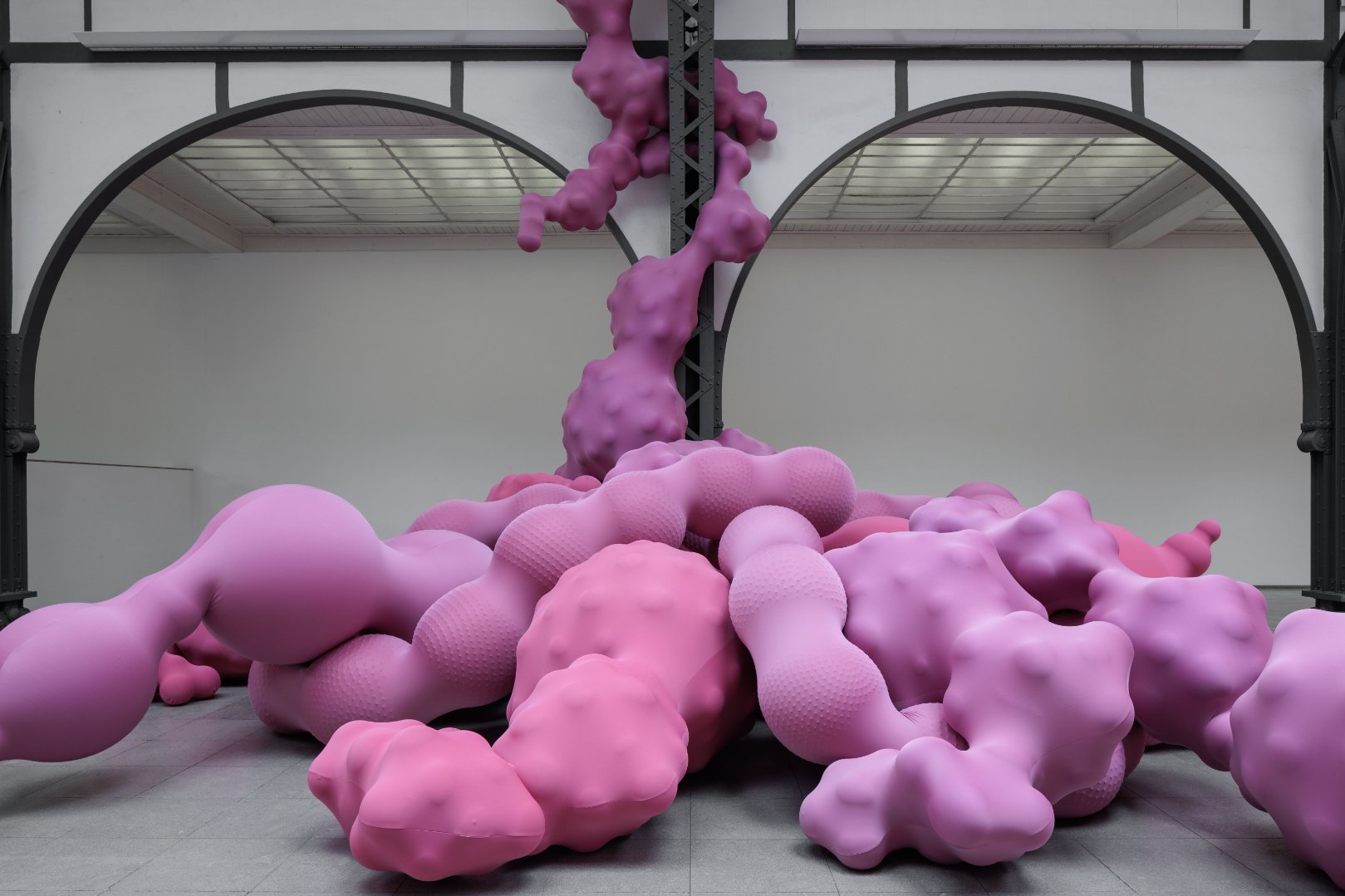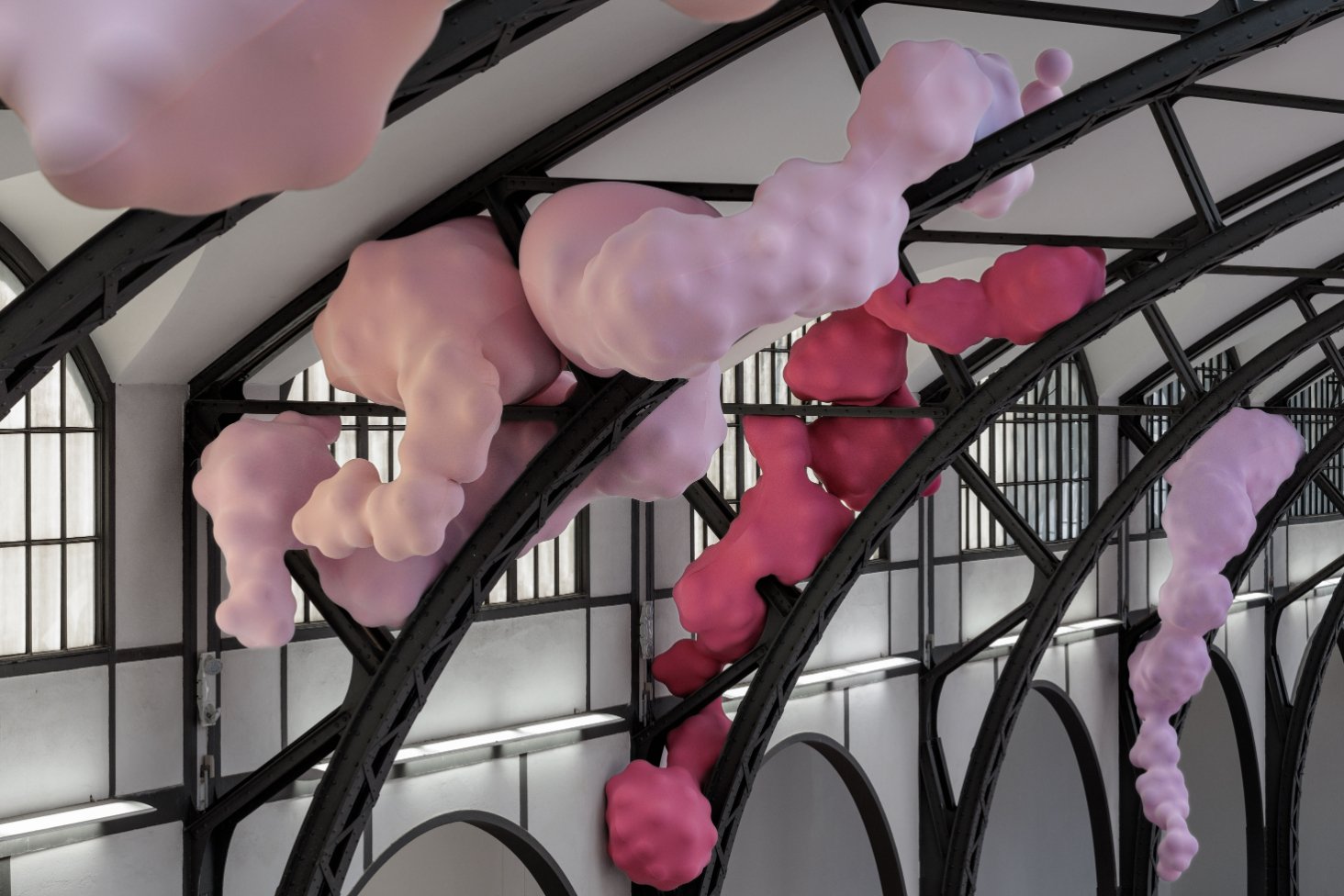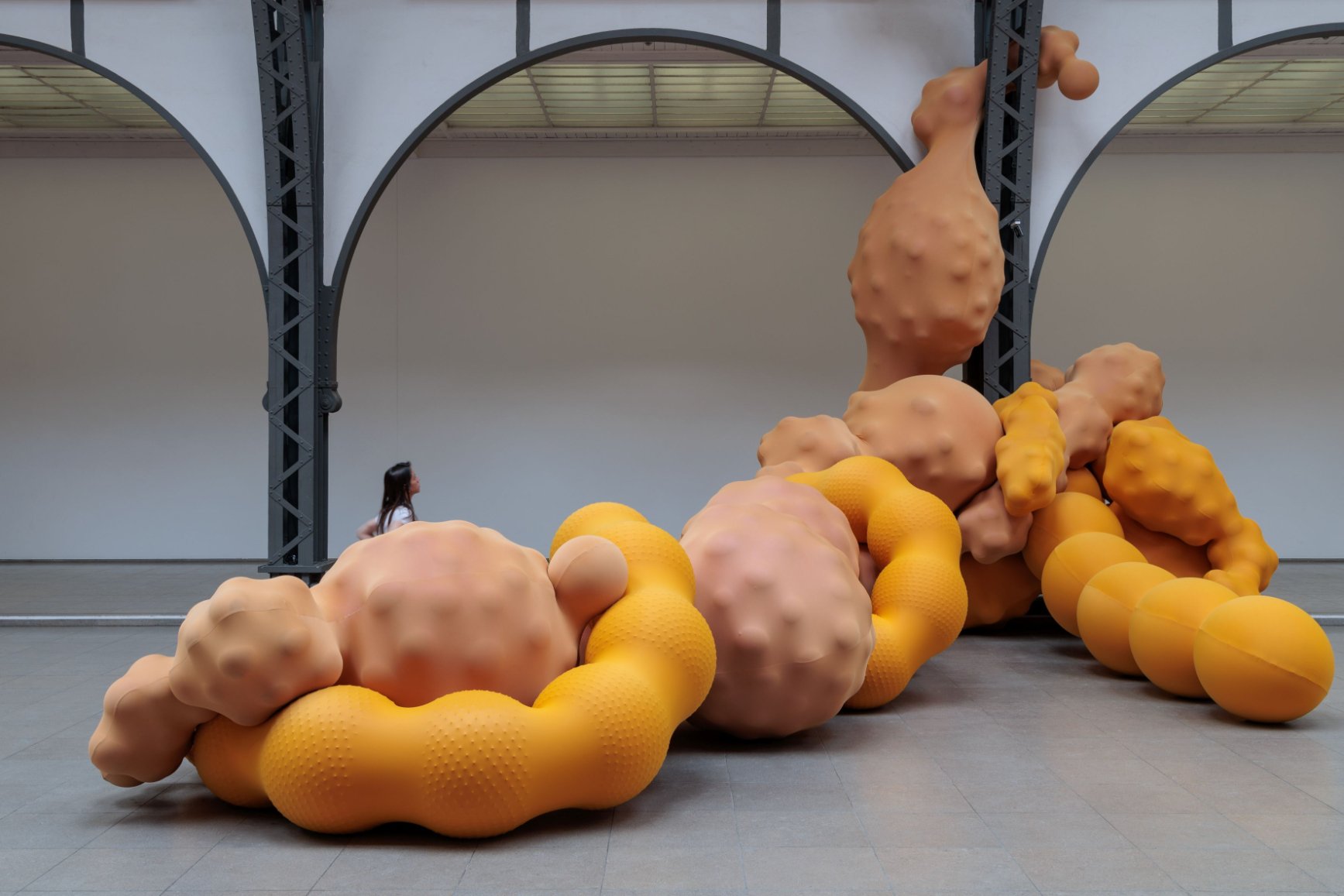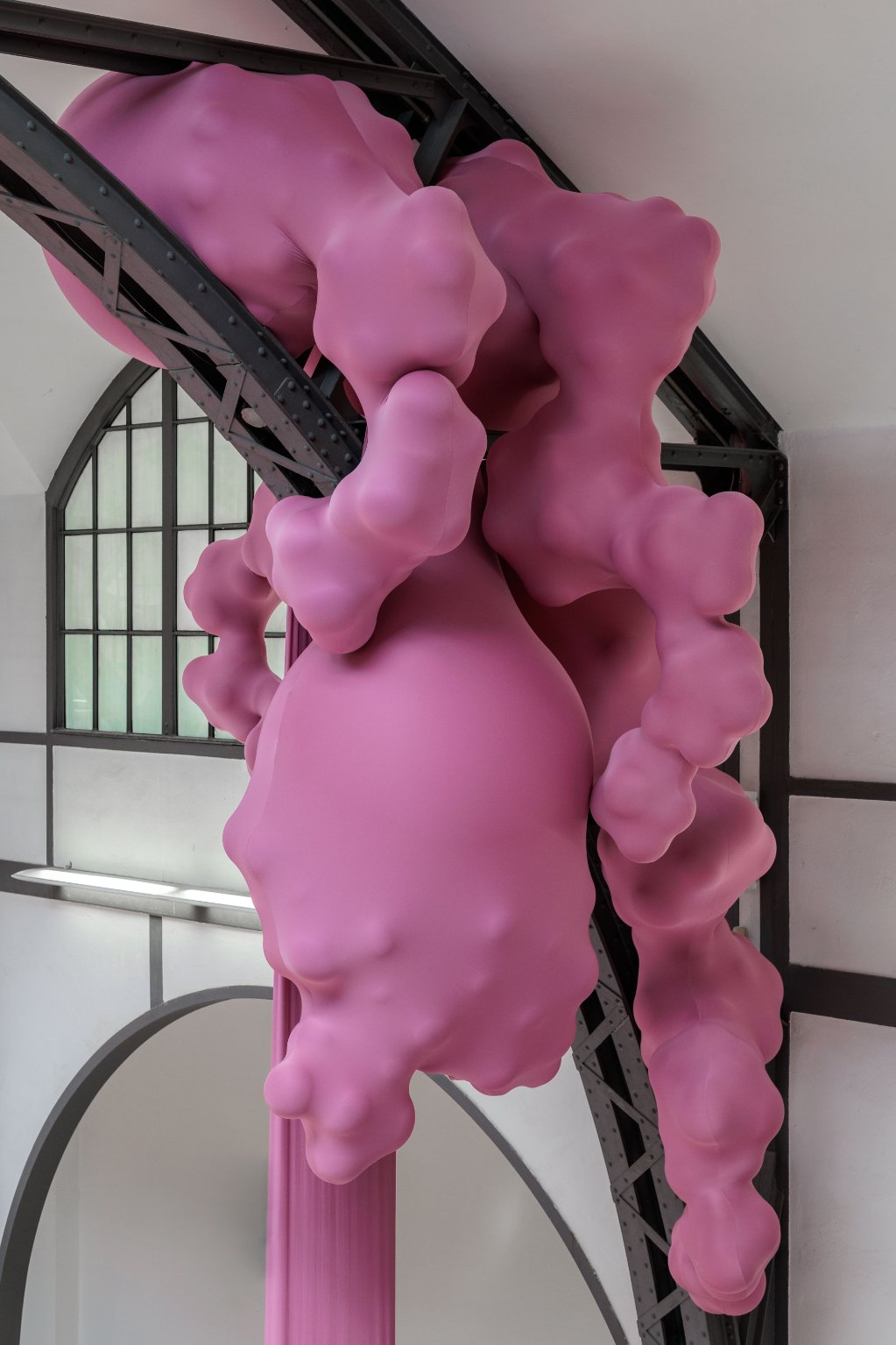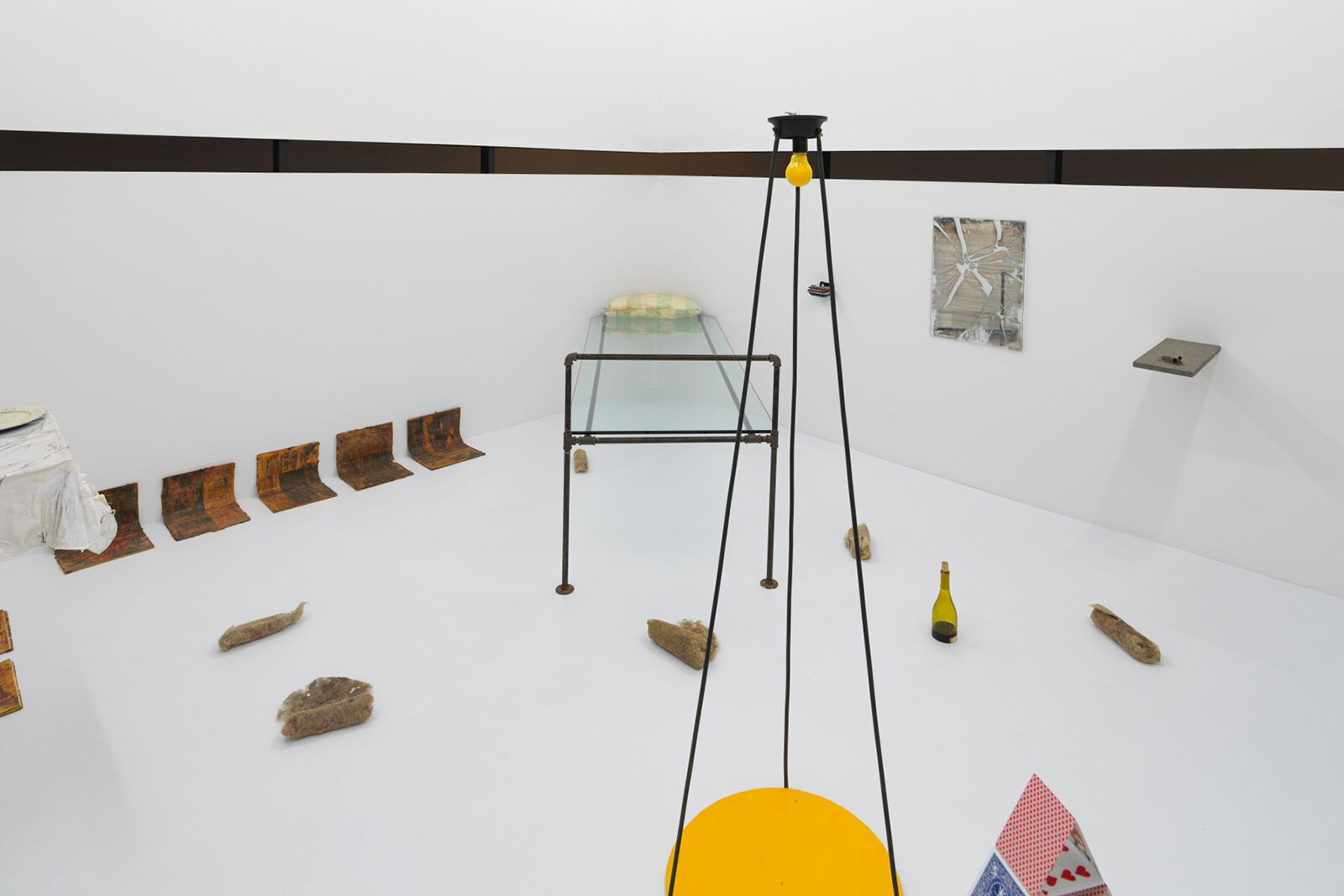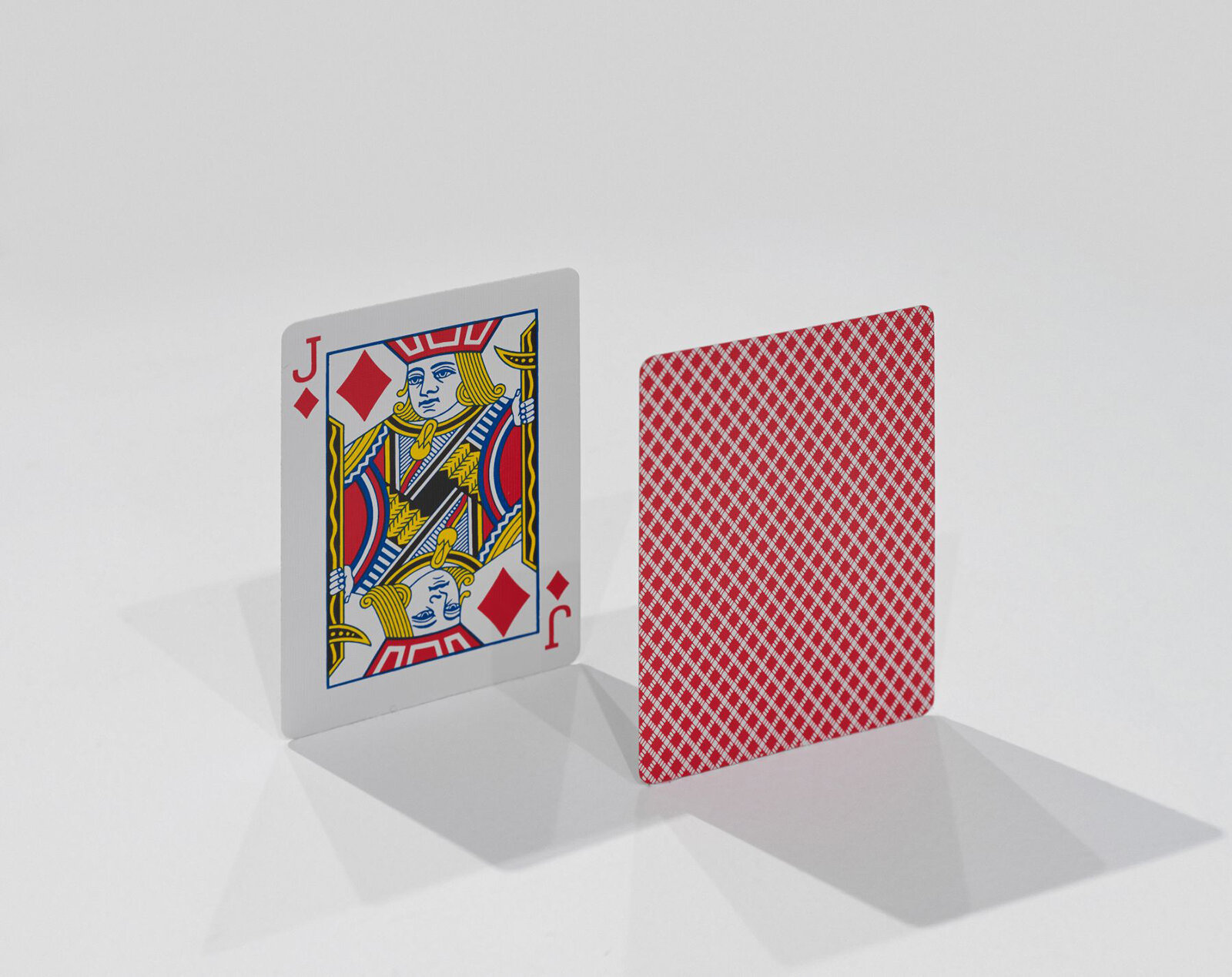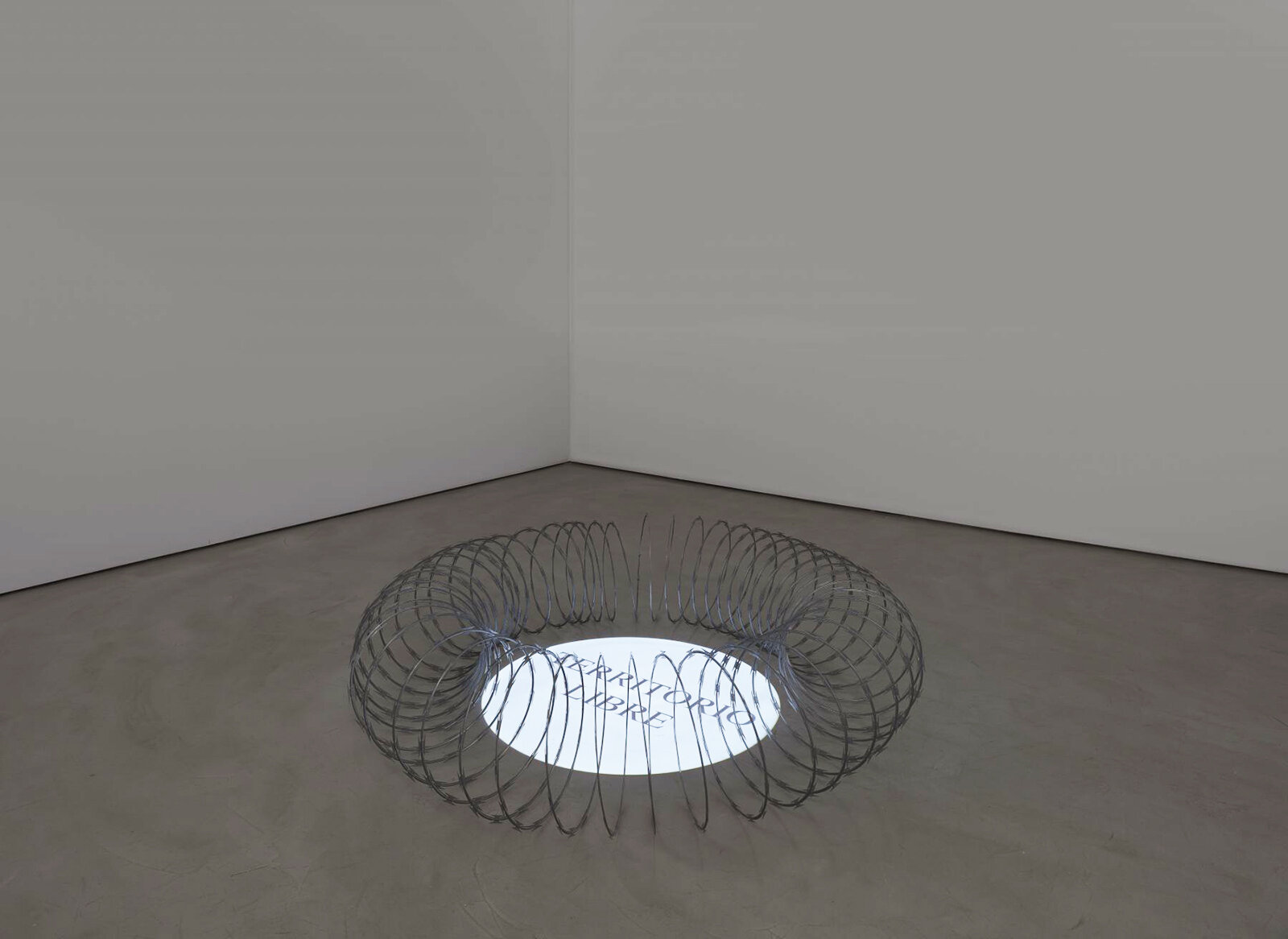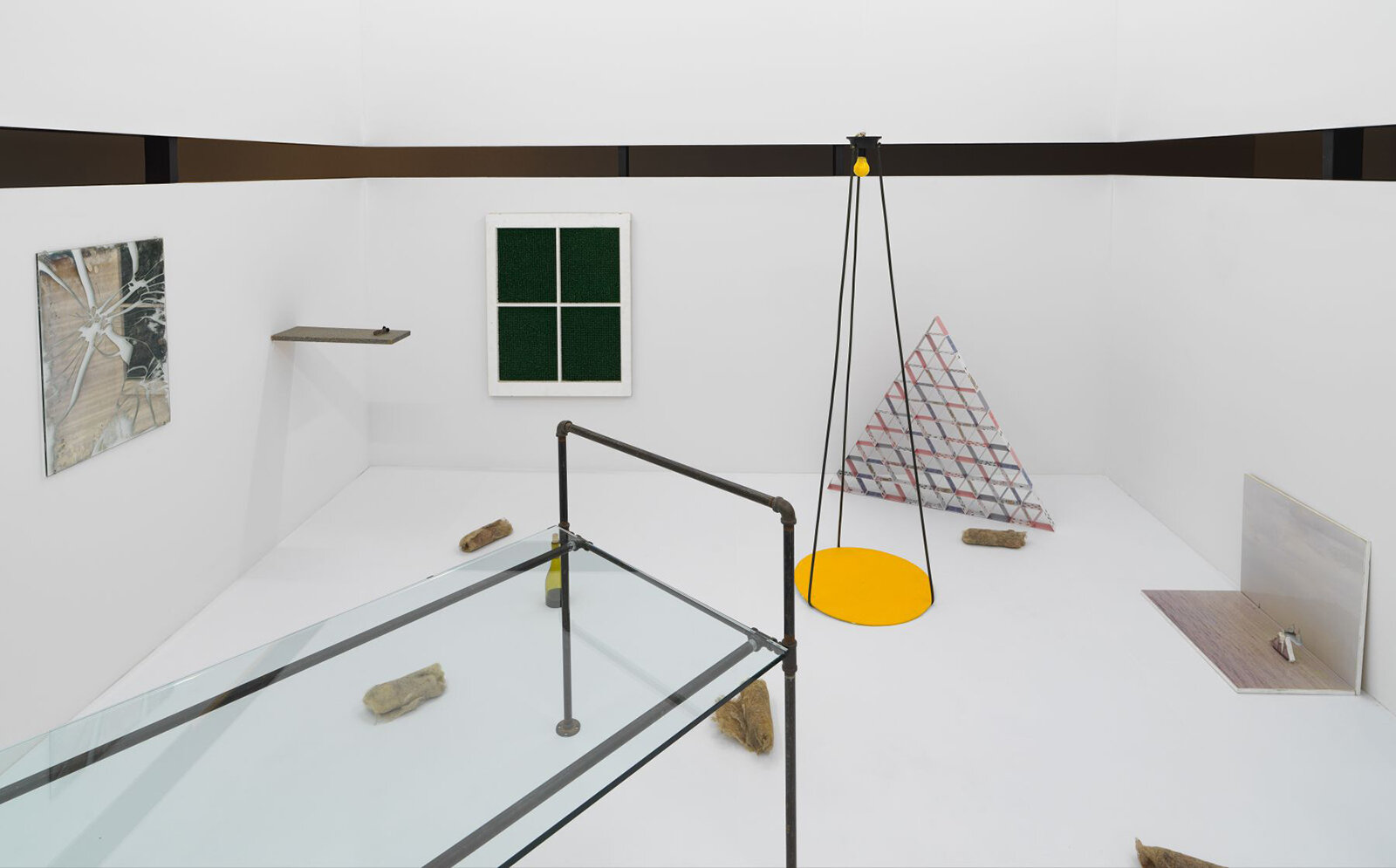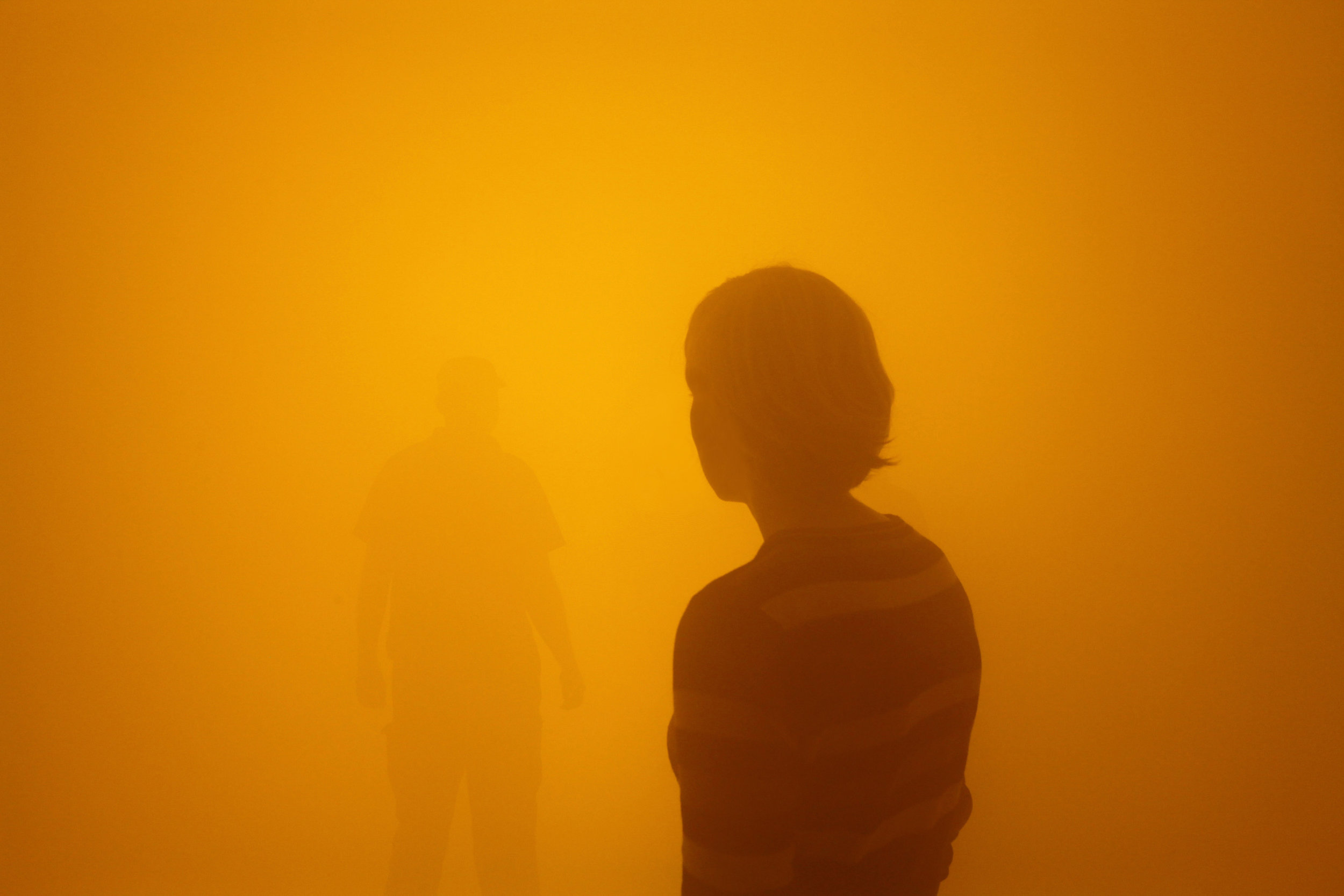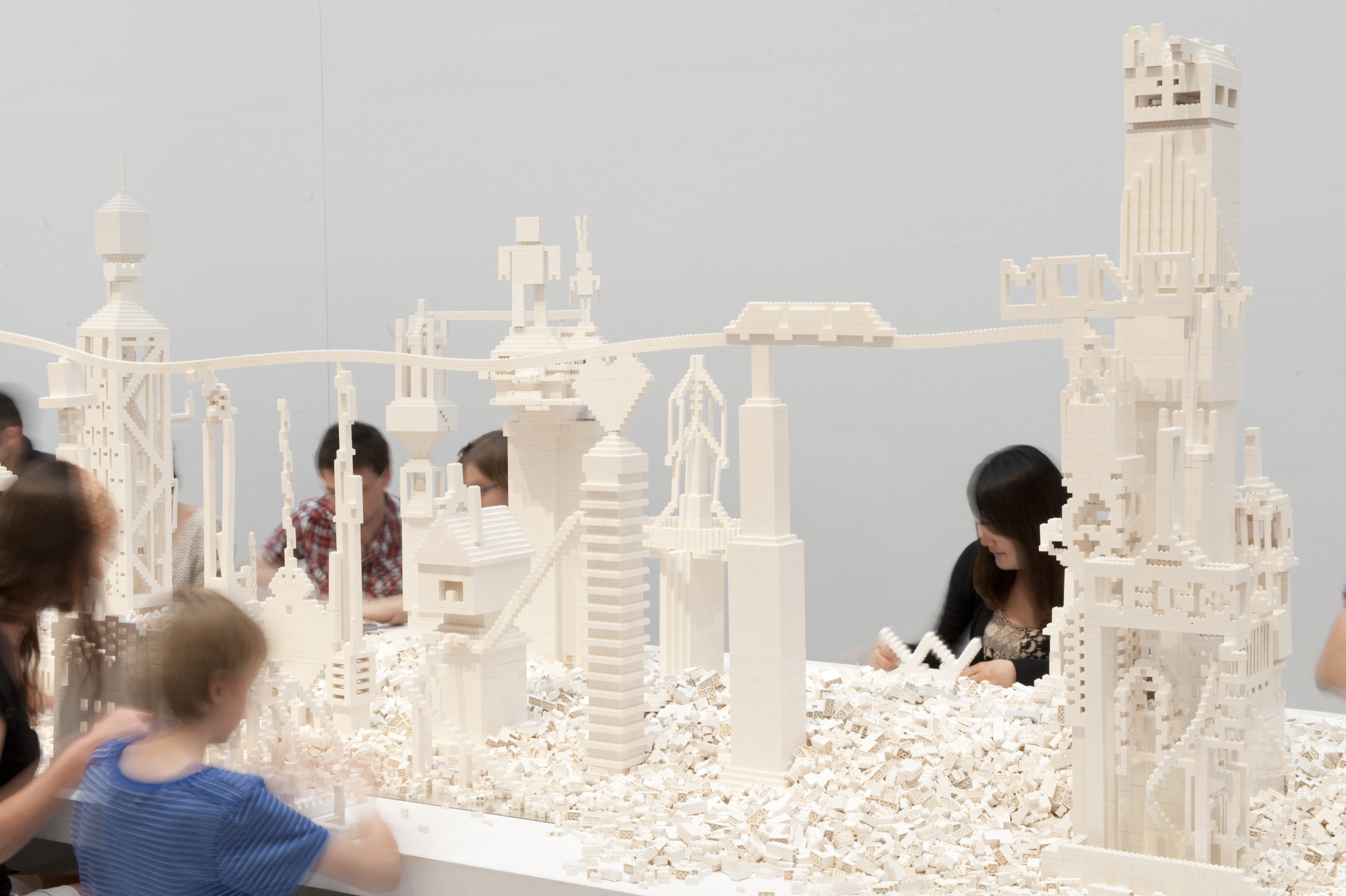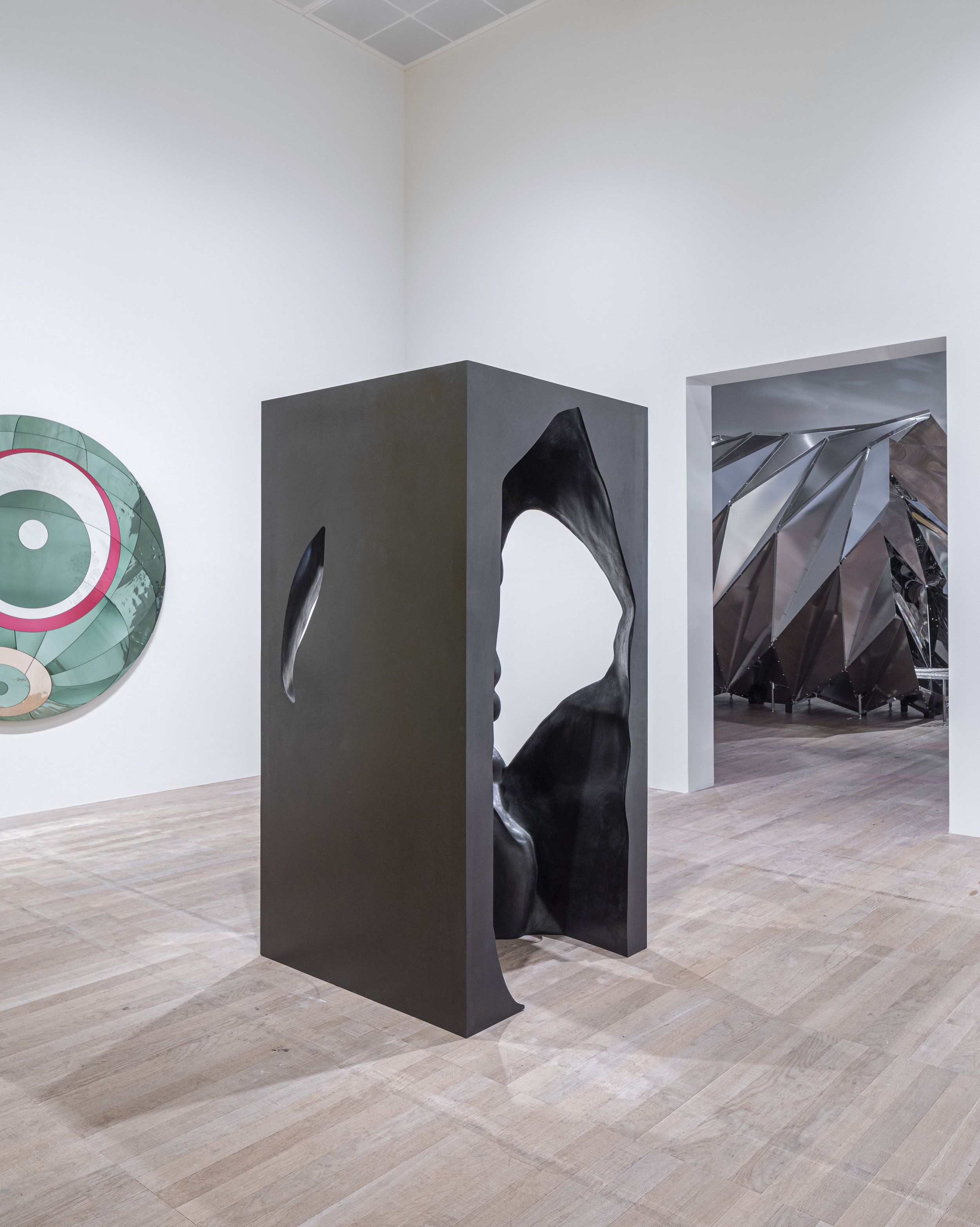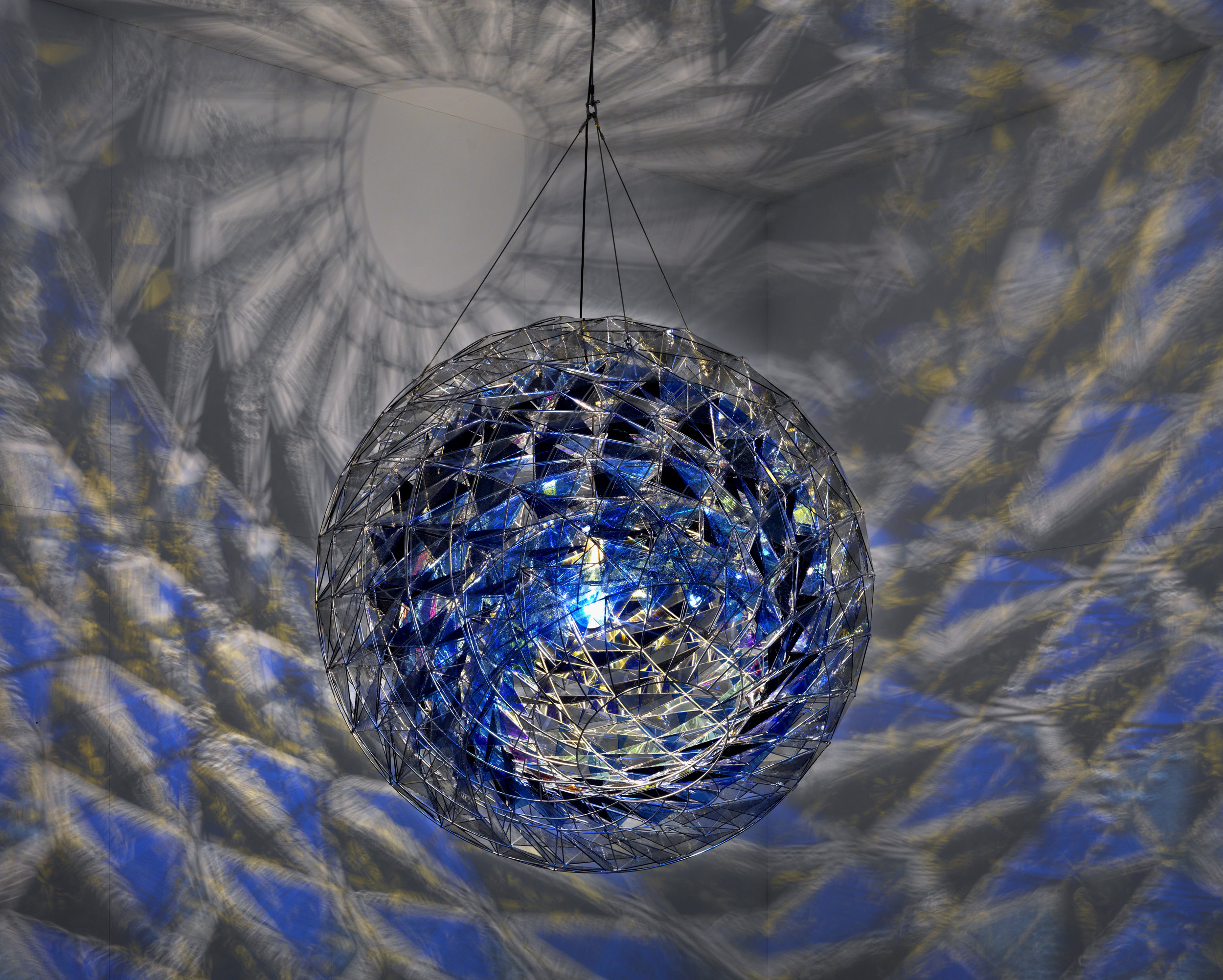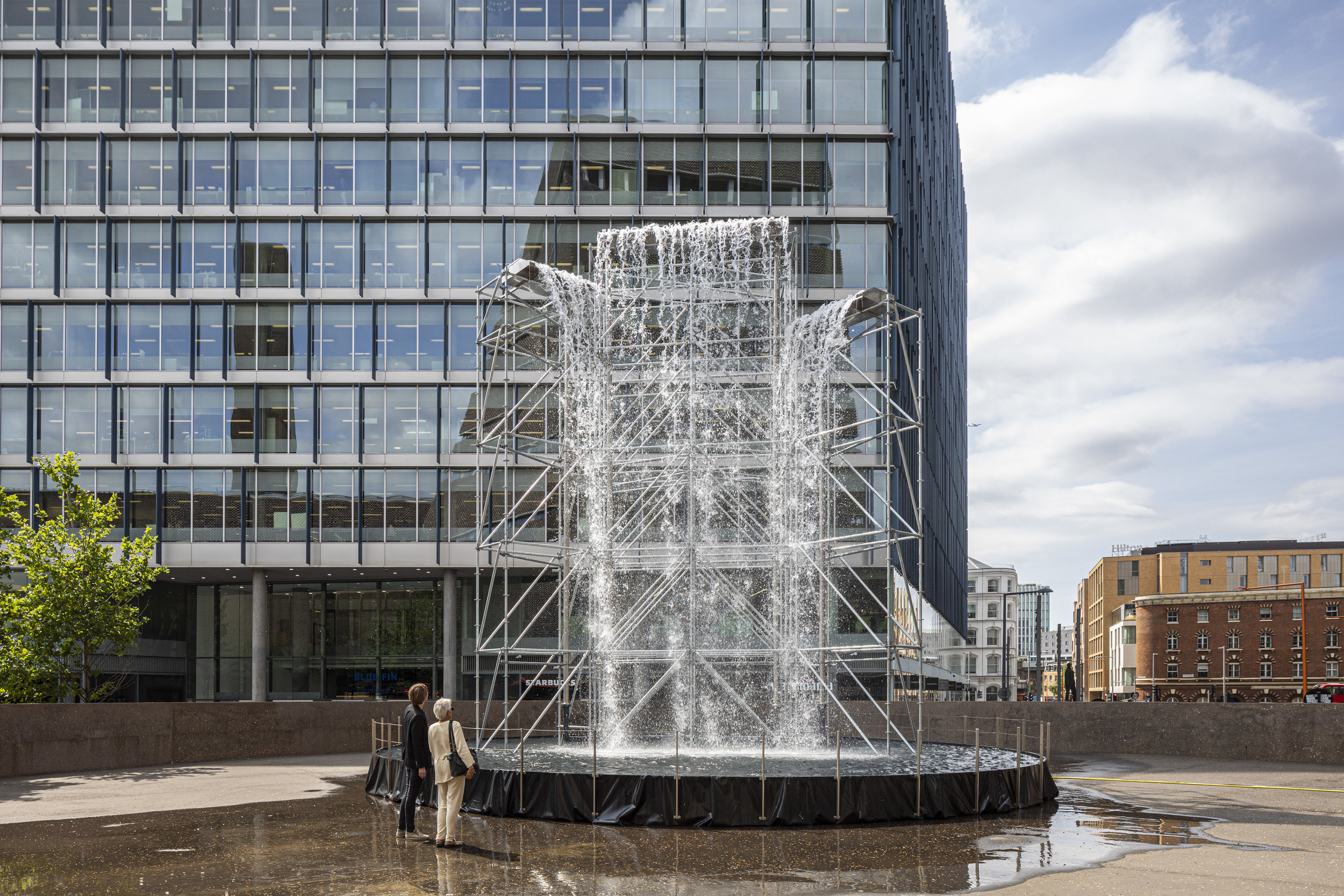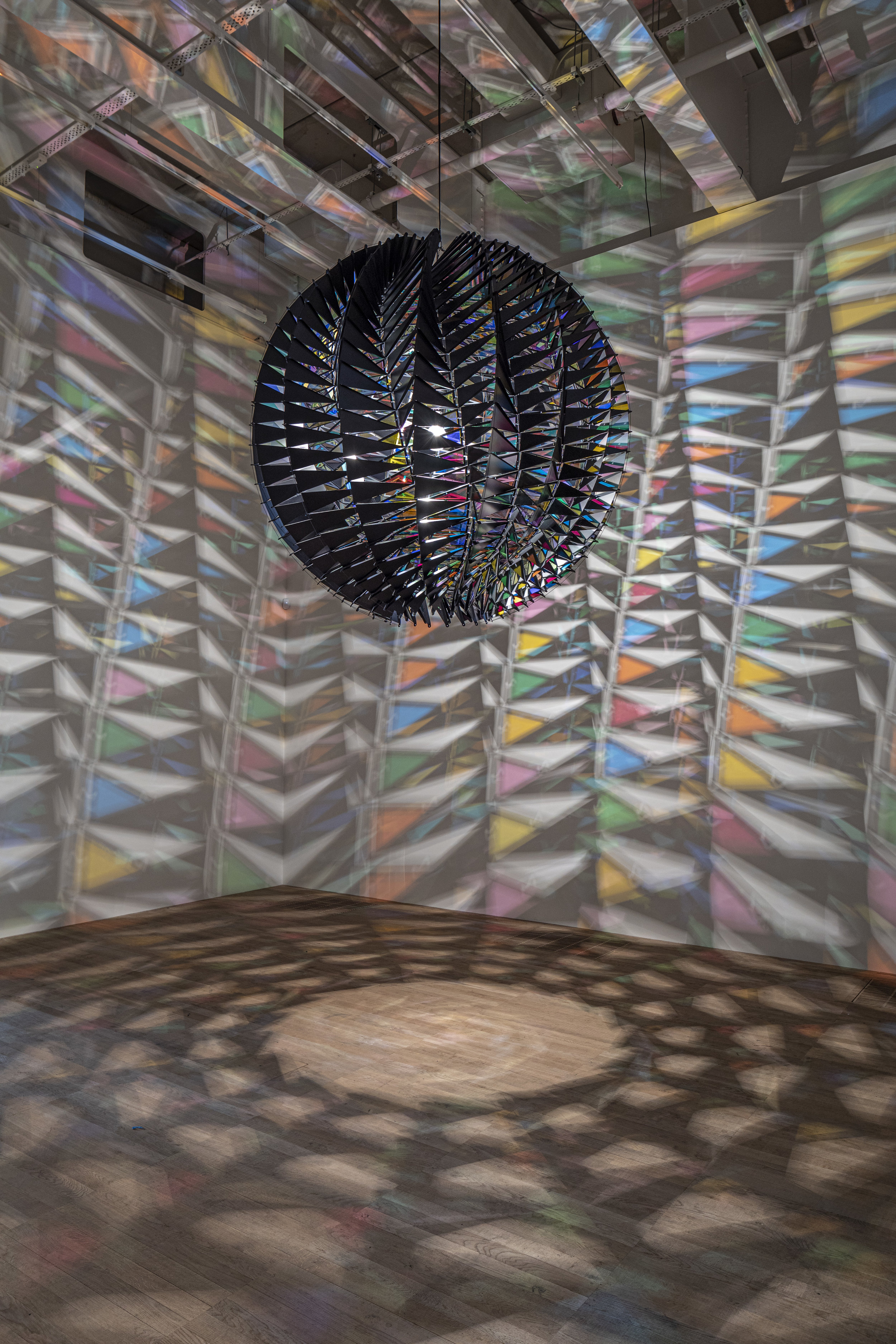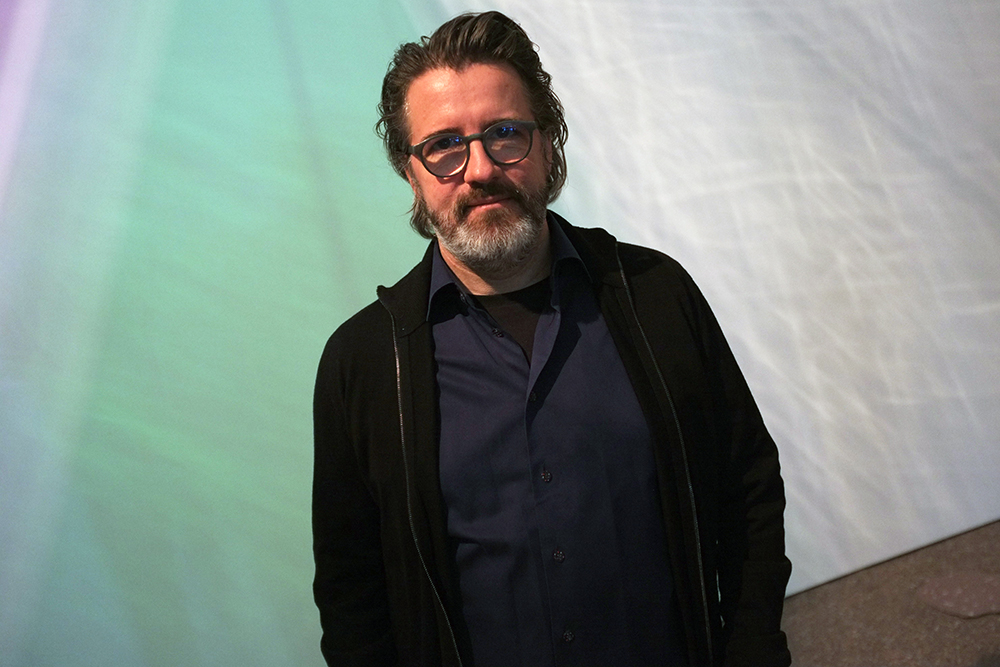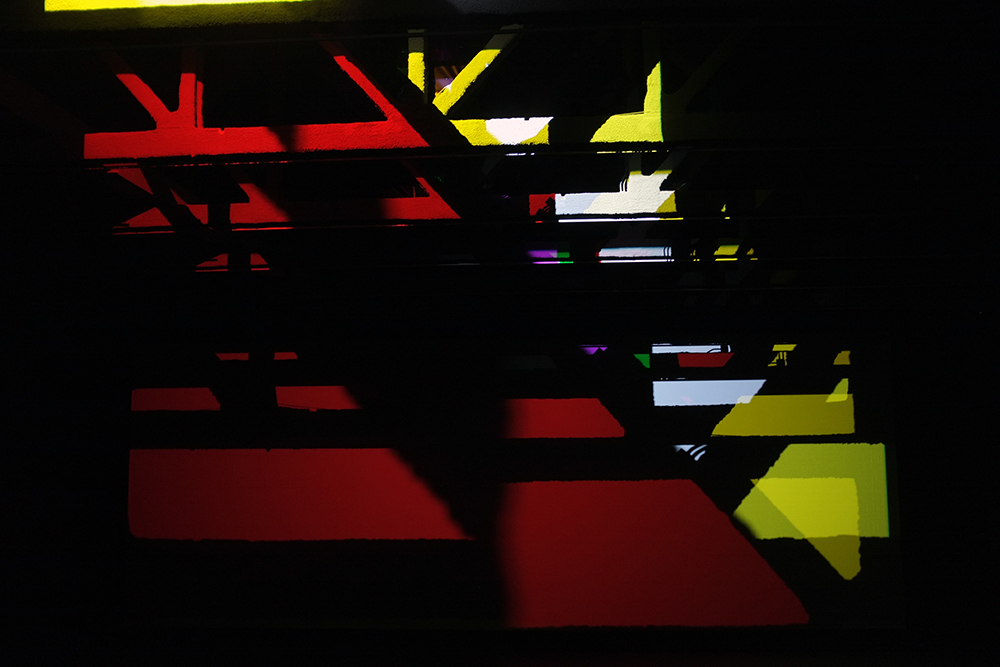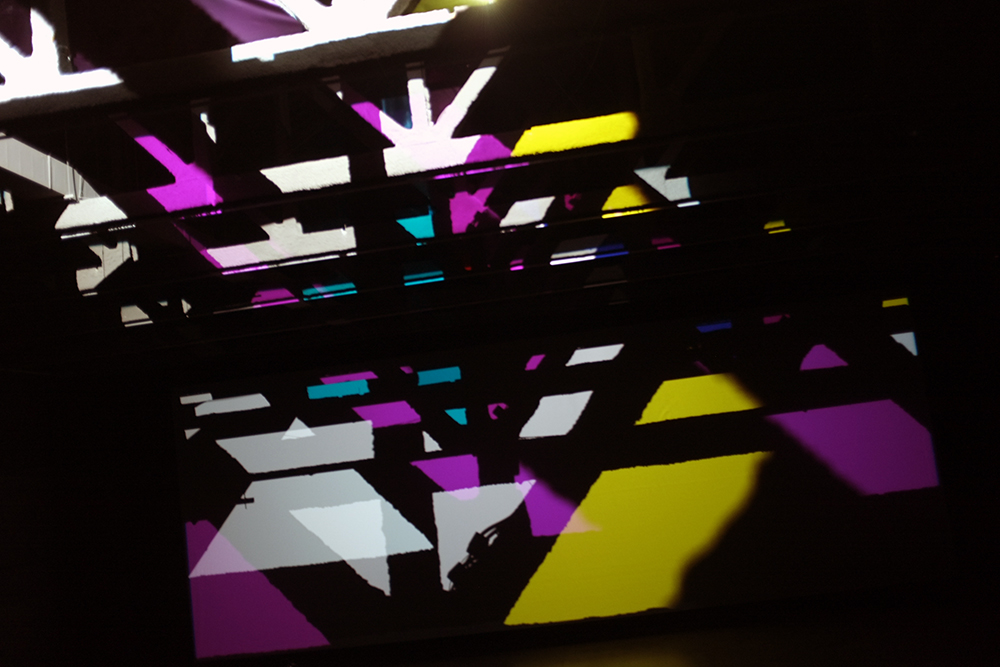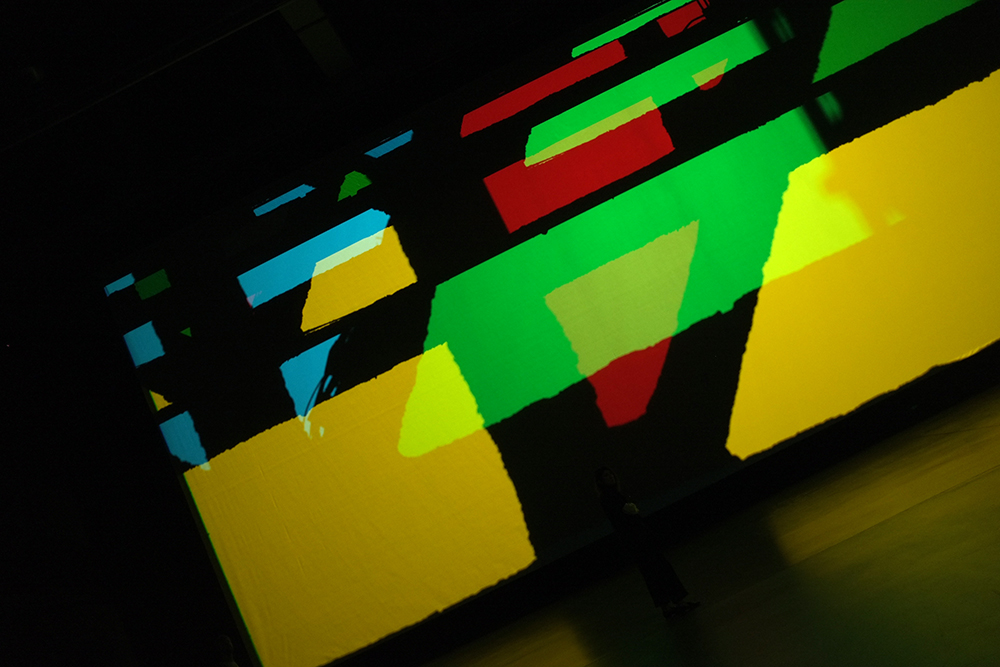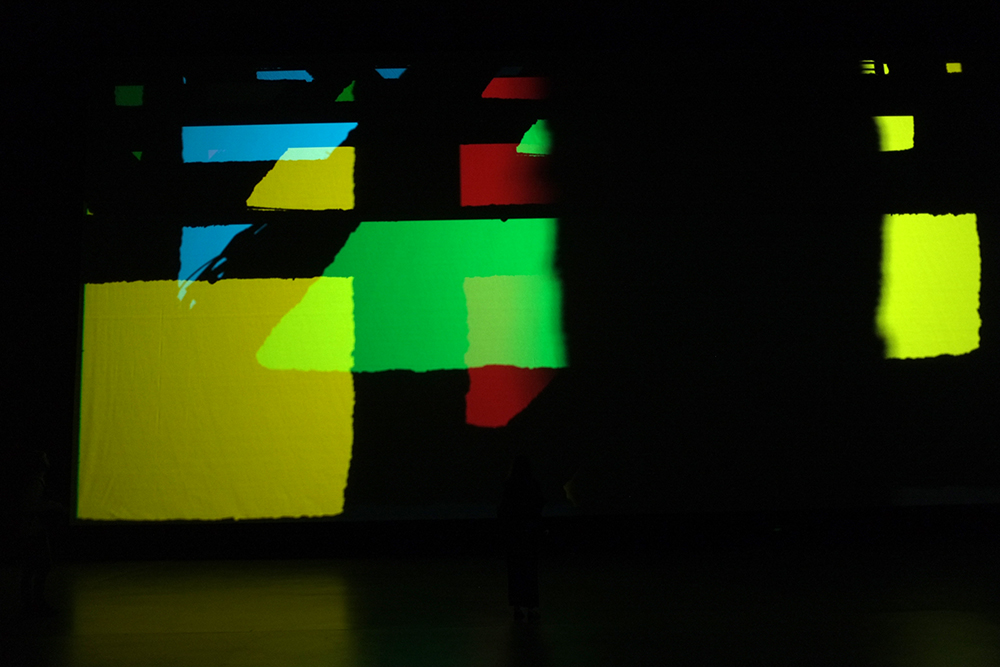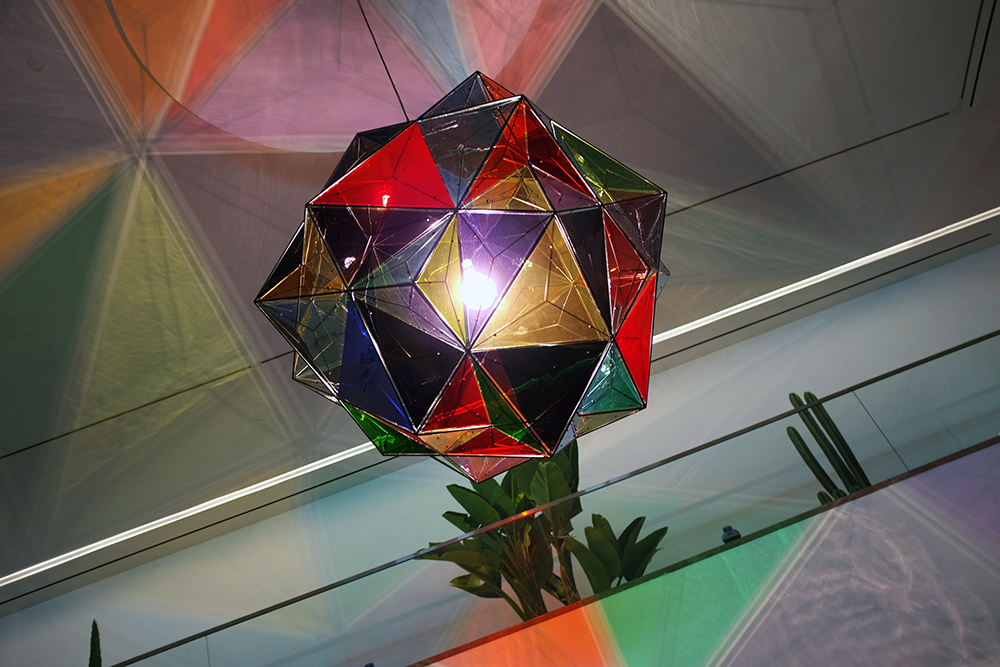text by Arlo Kremen
Embrace is the largest installation of the Czech-born artist Klára Hosnedlová. The installation was produced as the culmination of the annual CHANEL Commission at Hamburger Bahnhof—the old train hall turned art institution. Her resulting work has a remarkable all-at-once effect, where disparate facets of existence overlap: tactile, industrial, sound, history, architecture, scale, the land, and heritage are all interwoven in her piece, compelling visitors to sit patiently in Hosnedlová’s singular world.
The artist transforms the exhibition hall’s original floors with grey stone tiles. The plane of grey is interrupted by gashes of sand, dirt, and water—natural material invades the clinical space of art reception. Industrial speakers sourced from Berlin clubs, some of which no longer exist, pile onto some of the intruding earth beds. While some speakers amplify the audio cycle for the show, others lie entirely inert as empty vessels.
The show’s soundtrack was developed by Berlin- and Brussels-based composer and artist Billy Bultheel. The track cycles through a women’s choir, Lada, who sing in Moravian micro-dialects, instrumental sections, church bells, and the voice of Czech rapper Yzomandias. Much of the work originates in memories and histories of where Hosnedlová grew up, the Moravian town of Uherské Hradiště, where the inorganic structures of central-east European communist industrial architecture and the region’s rich cultural landscape came into contact. The eight steel walls bordering the show hold sand-covered reliefs that similarly evoke memories. Both referring to Moravia’s history, they also call on the socialist wall friezes common in public buildings. With the fossils embodying both prehistoric and communist histories, they turn to Hosnedlová’s childhood in the immediate aftermath of Czechoslovakia’s Velvet Revolution, her birth taking place just a year after and three years before the formation of the modern Czech Republic in 1993. But they simultaneously represent her childhood hobby of collecting fossils, believing them to be remnants of another world.
Embrace, 2025
Klára Hosnedlová
Installation view
Courtesy Artist, Kraupa-Tuskany Zeidler, White Cube / Nationalgalerie – Staatliche Museen zu Berlin, Zdeněk Porcal – Studio Flusser
These reliefs also bear the work of glass-making artisans whose practice has been informed by generations of glass-makers, joining the separate referents of the reliefs through their regionality and as a historic artisan medium. Like claws, the hand-cast glass protrudes from the reliefs, mimicking, too, the carbonization of a prehistoric relic. Nine pieces of colored glass in total, whose material contrasts with the rigid structure of the reliefs, balancing fragility and durability.
The embroideries embedded in the reliefs act as portals to the past, depicting scenes from unseen staged performances that were photographed at brutalist structures in Berlin. These slow, intimate moments transport the viewer into a still past. Some depicted scenes emphasize physical touch. One embroidery shows a man with a lighter flaming right by his ambomen; his skin, brightened by the fire, evokes the sensation of a flame near the skin—its primal warmth. Another shows someone fiddling with a lit match, meditating on the feeling of an enclosing fire, a moment before movement. These gentle images are blown up within the immensity of the reliefs, both in size and in their references to ancient life and architecture, considering these ephemeral interactions with the body and natural phenomena like fire as contained within the vastness of history, politics, and culture.
Embrace, 2025
Klára Hosnedlová
Installation view
Courtesy Artist, Kraupa-Tuskany Zeidler, White Cube / Nationalgalerie – Staatliche Museen zu Berlin, Zdeněk Porcal – Studio Flusser
Some reliefs, displaced from the steel walls, are fixed to the hemp and flax tapestries hanging in the middle of the hall. Six in total, they hang from the ceiling and culminate in clumped tendrils, which cover the floor around the tapestry. Each is made from spun flax and hemp and dyed in an earthy tone from plant-based dyes. Such works also return to Bohemia, for the region has a long, pre-industrial tradition of flax and hemp cultivation that largely ended after the Second World War, when global industrialization and the legacies of colonial trade displaced regional textile production across Europe. For these works, Hosnedlová worked with the last flax and hemp processors in that region of modern-day Czech Republic. These fixtures, both blocking the viewer out and trapping the viewer in, disassemble traditional notions of inside and outside, inculcating the viewer into a landscape.
The show accomplishes an evocation. Through Embrace, a feeling of loss and slippage permeates, but its subject is not turning to pure nothingness. What is decaying—whether it be the cultural traditions and history of Moravia due to colonial capitalism or the regional sonic topography of language and music felt passing through the dusty, beaten, and partially defective speakers—it is going somewhere. Whether in memory-soaked imaginative environments like the one Hosnedlová crafts, or as a relic for new generations to uncover, the artist demonstrates her trust that the Moravia of her childhood will not disappear—it will carbonize under the earth for someone else to uncover and cherish as a key to another world.
Embrace is on view through April 1, 2026 @ Hamburger Bahnhof, Invalidenstraße 50, Berlin.









